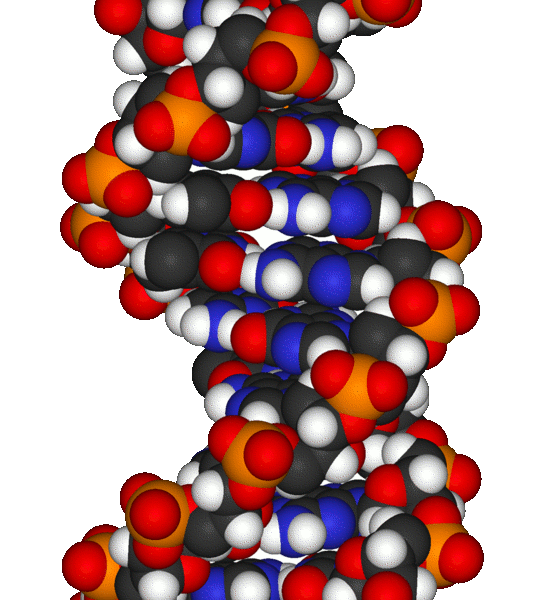Scientists in America have shown that cells send electrical signals along their DNA to check its integrity.
If mutations or damage to DNA goes uncorrected, especially if it affects certain critical genes, the results can be disasterous for the viability of cells or whole organisms since one consequence of DNA damage is cancer. Thankfully cells are equipped with enzymes that can recognise genetic spelling mistakes made by mutations and can excise the incorrect letter and replace it with the right one.
 But a key question is how this checking process can take place quickly enough, given that the average human cell contains more than 3 billion genetic letters - that's more than a pile of encylopaedias piled taller than a person. To find out, Caltech scientist Jacky Barton and her colleagues used E. coli bacteria to study the process.
But a key question is how this checking process can take place quickly enough, given that the average human cell contains more than 3 billion genetic letters - that's more than a pile of encylopaedias piled taller than a person. To find out, Caltech scientist Jacky Barton and her colleagues used E. coli bacteria to study the process.
E. coli double their numbers every 20 minutes so they also need rapid mechanisms to check their DNA sequence and they also contain the bacterial equivalents of many of the same DNA repair enzymes used in humans, making them ideal study subjects. The researchers focused on two enzymes in particular MutY and EndoIII, which are charged with identifying specific types of DNA damage. These proteins can walk along a DNA chain, checking the sequence, but there aren't very many of them (there may be only 30 MutY proteins in an entire cell) and they move much too slowly to completely screen the genome within the time that they do. But what the researchers also noticed is that these proteins carry with them clusters of iron and sulphur atoms (4Fe-4S), which can pick up and release electrons, changing their charge in the process.
Now, in an elegant series of experiments in which the team made specific molecular tweaks to the structures of some of these repair enzymes, the researchers have shown that the repair enzymes work in pairs and signal to each other using the DNA between them like a telephone line. The process is incredibly simple: one repair protein lands on the DNA and activates itself. A second repair protein lands further along the DNA chain and releases a small amount of electric charge, which is conveyed along the DNA chain as if it were a wire. If it reaches the first protein this indicates that the DNA region separating the two proteins is intact and the sequence is correct. The first protein picks up the electrical charge and detaches from the DNA before binding somewhere else.
But if the sequence is wrong, as a consequence of mutation or damage for example, the signal does not transmit and the two proteins remain attached to the DNA and work their way slowly towards each other, laboriously checking each genetic letter as they go. When a fault is discovered and repaired, signalling between the two proteins is restored and they can depart to screen other parts of the genome. In this way, using electrical signalling, the entire genome can be checked and maintained in tiptop condition by using just a small number of repair enzymes.
- Previous Pagerank for Species
- Next Genes for addiction










Comments
Add a comment